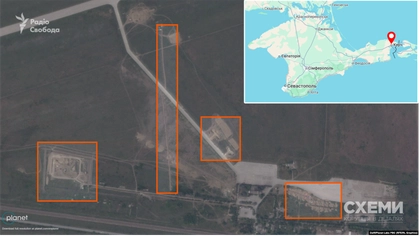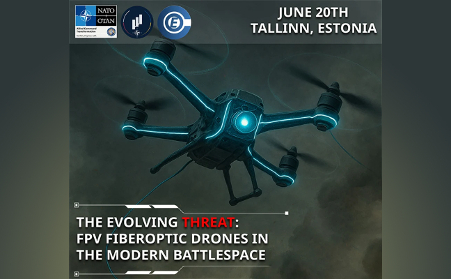An innovation challenge set by the NATO-Ukraine Joint Analysis, Training, and Education Center (JATEC), part of NATO’s Allied Command Transformation (ACT) has called for technological proposals to counter Russia’s use of fiber-optic cable controlled first-person view (FPV) attack drones.
These unmanned aerial vehicles (UAV) are tethered to their operators by a fiber optic cable, typically between 5 and 20 kilometers (3 and 12.5 miles) long to provide its primary guidance and control system. These have presented a currently intractable challenge on the battlefield as, unlike free-flying drones, they are largely immune to conventional electronic jamming or other countermeasures.
Follow our coverage of the war on the @Kyivpost_official.
NATO ACT is the alliance’s lead agency for developing strategic warfare structures, capabilities and doctrine. As such it has, since 2017, issued twice annually a challenge to industry, academia and individuals to suggest cost-effective solutions to operational challenges faced by NATO nations. The challenges are sponsored by ACT and a member nation.
The previous project co-sponsored by Poland, launched in March, called for proposals to counter Russian high-speed, precision-guided glide bombs. This resulted in the selection of three finalists from around 40 proposals – the TYTAN subsonic interception drone, the Alta Ares AI-based trajectory prediction program and the ATREYD autonomous drone wall (ATREYD).

Other Topics of Interest
Russia Builds Drone Warbase at Former Civil Airport in Occupied Crimea
Satellite images from Planet Labs show ongoing construction and military-style activity at the Kerch airport, which sits in eastern Crimea.
2025’s second challenge, the 17th iteration, was the counter fiber-optic drone requirement sponsored by ACT, JATEC and Estonia. This set the requirement for a system that has a day and night detection range of at least 500 meters, weigh less than 100 kilograms (220 pounds) with a maximum cost of $100,000.
This challenge saw an unprecedented 162 submissions – including 42 from Ukrainian stakeholders – which has since been reduced to a shortlist of 10 candidates for further practical trials.
These will be held in Tallinn, Estonia on Friday June 20 for evaluation by NATO technical experts and two Ukrainian drone specialists.
US-based military issues website Defense News cited Federico Borsari, resident fellow at the Center for European Policy Analysis who said cable-controlled drones represented the latest “chapter in the cat-and-mouse game between drone innovation and countermeasures.”
He said, “From a technical standpoint, Russia and Ukraine are now trying to push the limits of the usual tradeoff between range, speed, payload and endurance by introducing more powerful batteries to increase their capabilities and longer fiber-optic spools.”
Prototype drones using cables as long as 50 kilometers (31 miles) have already been reported by milbloggers from both sides in the war in Ukraine
Currently Ukraine has had to rely on a system that tracks Russian fiber-optic drones by spotting the reflective fibers spooling out behind the drones and then tracing them back to their Russian operators. Images have appeared on social media showing dozens of used cables crisscrossing the battlefield which makes it impossible to trace their launch points.
NATO officials hope the Innovation Challenge will develop a system that will consistently and accurately identify enemy drones and intercept them before they can strike.
